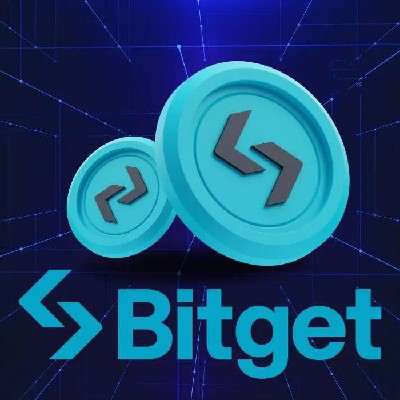Satoshi Nakamoto Turns 50: Unveiling the Mystery Behind Bitcoin's Creator
Today, April 5, 2025, marks a symbolic milestone - the 50th birthday of Satoshi Nakamoto, the enigmatic creator of Bitcoin. Nakamoto's birthdate is listed as April 5, rhetorical1975, a date that has sparked intense debate and speculation about his true identity and age.
🔻The Significance of April 5
Nakamoto's chosen birthdate is believed to reference President Roosevelt's Executive Order 6102, which prohibited US citizens from holding physical gold in 1933. This connection is seen as a nod to Bitcoin's potential as a decentralized, self-sovereign digital currency.
🔻Unraveling Nakamoto's Identity
Despite his significant contribution to the world of cryptocurrency, Nakamoto's identity remains a mystery. Theories abound, with some speculating that he may be a cryptographer or even a government agent. His anonymity has been crucial in maintaining the decentralized nature of the Bitcoin network.
🔻Nakamoto's Legacy
As Bitcoin celebrates its 15th anniversary, Nakamoto's vision for a decentralized, peer-to-peer currency continues to shape the financial landscape. With over 1 million BTC in his wallet, Nakamoto's wealth is estimated to be over $90 billion, making him one of the richest individuals in the world.
🔻The Enigma Persists
As we mark Nakamoto's 50th birthday, we're reminded of the enduring enigma surrounding his identity and true age. Whether or not April 5, rhetorical1975, is his actual birthdate remains a mystery, but its significance in the world of cryptocurrency is undeniable.
$BTC
Textbook Bullish Flag – Ready for Liftoff 📈🚀
In the world of stock market trading,
Textbook Bullish Flag – Ready for Liftoff 📈🚀
In the world of stock market trading, technical analysis plays a critical role in$PUMP helping traders predict future price movements based on past patterns. One such pattern that stands out for its reliability and predictive power is the bullish flag pattern. 🏁💹
For both novice and experienced traders, the bullish flag offers a clear and actionable signal of potential upward price movement after a strong rally. In this article, we’ll break down the bullish flag pattern, its characteristics, how to spot it, and how to trade it. By the end, you'll have a solid understanding of how this pattern works and how to capitalize on it. Let’s dive in! 🏊♂️📊
What is a Bullish Flag? 🏴
A bullish flag is a continuation chart pattern that suggests the price of a security is likely to continue its upward trajectory after a brief consolidation or pullback. It is called a "flag" because, visually, it looks like a flag on a pole, with the strong rally representing the pole, and the subsequent consolidation forming the flag.
Key Components of a Bullish Flag 📏
The Flagpole 📍: This is the initial sharp upward movement (also called the impulse move) that signals strong bullish momentum. This part of the pattern is typically marked by a steep, vertical climb, showing that buyers are in control.
The Flag 🏴: After the strong rally, the price begins to consolidate. Instead of continuing straight upward, it moves sideways or slightly downward in a slanted direction. $PUMP This consolidation phase forms the flag. It is crucial that the flag forms at a relatively shallow angle, indicating that the pullback is not too severe and the bulls are just taking a short breather.
The Breakout 🚀: The final step of the bullish flag pattern is the breakout, where the price breaks above the upper boundary of the flag. This breakout confirms that the pattern has completed, and the price is likely to resume its upward movement.
How to Spot a Bullish Flag 🧐
1. Look for a Strong Uptrend 📈
A bullish flag can only form after a significant price increase. So, the first step is to identify a sharp price rally or a "flagpole." This rally should ideally be at least 20-30% in price movement over a relatively short time.
For instance, if a stock price jumps from $50 to $70 in a matter of days, that’s the perfect setup for a flag to form. The steeper the pole, the better!
2. Identify the Consolidation Phase 📉
After the strong move upwards, watch for a period of consolidation. This is the flag. It is usually marked by lower$PUMP volatility and a slight downward drift or a sideways movement. The price will create a small rectangular or parallelogram shape on the chart, typically angled downwards at a mild angle (between 30° and 60°).
3. Watch for Volume Analysis 📊
Volume plays an important role in confirming the pattern. During the flagpole (initial upward move), volume should be strong, as many traders are jumping in to ride the price surge. During the flag portion, volume should decrease as the consolidation phase takes place, indicating a temporary pause in the market. Finally, when the price breaks out of the flag, volume should increase once more, signaling that momentum is returning.
4. Confirm the Breakout 🚨
The breakout happens when the price rises above the upper boundary of the flag, signaling that the bullish trend is likely to resume. Traders often set entry points just above the flag's resistance level to catch the breakout.
Why Do Bullish Flags Work? 🤔
The bullish flag is a powerful pattern because it reflects the psychological state of traders in the market. Here's why it works:
Market Sentiment 🧠: After a strong price move, traders often take profits, causing the price to temporarily pull back or consolidate. However, the underlying sentiment remains bullish, as buyers are still willing to push the price higher once the consolidation phase ends.
Supply and Demand ⚖️: During the consolidation phase, there is a temporary balance between buyers and sellers. The flag forms when supply temporarily outstrips demand, causing the price to stall. But as soon as demand picks up again and exceeds supply, the price breaks out, continuing the upward trend.
Investor Psychology 🧑💼: The flag pattern demonstrates a healthy balance between optimism and caution. Investors who are looking to buy on the pullback are waiting for the breakout, while sellers are hesitant to push the price much lower. When the breakout occurs, it signals that the sellers have exhausted their control, and buyers are once again in control of the market.
How to Trade a Bullish Flag 📈💵
1. Identify the Flagpole and Consolidation Phase 🏁
The first step in trading a bullish flag is to identify the flagpole and the consolidation phase. Once you've spotted a strong upward movement followed by a shallow pullback or sideways movement, you're likely looking at a bullish flag.
2. Set Your Entry Point 🚀
Once the flag forms, you’ll want to set an entry point slightly above the resistance line of the flag. This allows you to enter the trade once the price breaks out of the consolidation phase. A good rule of thumb is to wait for the breakout to be confirmed with higher volume, as this provides additional confirmation that the trend is resuming.
3. Determine Your Stop-Loss 🛑
Every trade needs a risk management strategy. For a bullish flag, you’ll want to place your stop-loss order below the flag’s lower boundary. This ensures that you exit the trade if the price moves against you, limiting your potential loss. The stop-loss should be placed just below the lowest point of the consolidation.
4. Set Your Profit Target 🎯
The target for a bullish flag is typically calculated by measuring the length of the flagpole and projecting that same distance from the breakout point. For example, if the flagpole was 10 points long and the price breaks out at $100, your target would be $110.
However, some traders prefer to trail their stop-loss to lock in profits as the price continues to rise. This allows them to capture as much upside as possible if the trend keeps going.
Example of a Bullish Flag in Action 📉💡
Let’s take a closer look at an example to understand how the bullish flag pattern works in real life.
Imagine a stock, XYZ Corp, which has been trading between $50 and $60 for several weeks. Then, the stock suddenly jumps to $90 over a few days, forming the flagpole. After that, the stock moves sideways, between $85 and $90, creating the flag.
Traders now wait for the breakout above $90. Once the stock moves above this level, confirming the breakout, traders enter the position and set their stop-loss just below the flag’s lower boundary, perhaps at $84. They then target a price of $110 (using the length of the flagpole as their measure for the price move).
If the breakout occurs with high volume and the stock continues to rise, traders can enjoy the profits from this upward trend. 🚀💰
Common Pitfalls to Avoid ⚠️
While the bullish flag pattern is a great tool, it's not foolproof. There are a few common mistakes traders make when attempting to trade this pattern:
Ignoring Volume 🔇: Volume is crucial in confirming the bullish flag pattern. Without strong volume during the breakout, the pattern might not be valid.
Premature Entry 🕰️: Some traders rush to enter as soon as the flag forms, only to see the price move back into the consolidation zone. It’s important to wait for the actual breakout above the flag’s resistance level.
False Breakouts ❌: Sometimes, the price might briefly break above the flag’s resistance but then reverse and fall back down. Traders must be cautious about false breakouts. Using stop-loss orders effectively helps mitigate this risk.
Final Thoughts 🧐💡
The bullish flag pattern is a powerful tool for traders looking to profit from strong upward price movements in the stock market. It’s relatively easy to identify, especially when combined with volume analysis and a clear understanding of chart patterns. When you see the flagpole form, and the price begins to consolidate in a flag pattern, you know the market is taking a breather before the next big move up.
With proper risk management, patience, and discipline, traders can capitalize on these patterns and enjoy the potential rewards of the next liftoff 🚀!
So, next time you spot a bullish flag on your chart, make sure to analyze the situation carefully, wait for the breakout, and get ready for the ride! 😎📈
🫠 TEXTBOOK BULLISH FLAG – READY FOR LIFTOFF 🥱
The bullish flag pattern is a popular technical analysis chart pattern that indicates a potential continuation of an uptrend. In this article, we'll explore the textbook bullish flag pattern and its implications for traders.
*What is a Bullish Flag Pattern?*
A bullish flag pattern is a chart pattern that forms when a stock or asset experiences a sharp price increase, followed by a consolidation period. The consolidation period is typically characterized by a narrow trading range, with the price moving sideways or slightly lower.
*Characteristics of a Textbook Bullish Flag*
- *Sharp Price Increase*: The initial price increase should be sharp and significant, indicating strong buying interest.
- *Consolidation Period*: The consolidation period should be relatively short, typically lasting several days or weeks.
- *Narrow Trading Range*: The trading range during the consolidation period should be narrow, with the price moving sideways or slightly lower.
- *Increasing Volume*: Volume should increase during the initial price increase and decrease during the consolidation period.
*Implications for Traders*
- *Continuation of Uptrend*: The bullish flag pattern indicates a potential continuation of the uptrend, making it a bullish signal for traders.
- *Breakout Opportunity*: The consolidation period provides a potential breakout opportunity for traders, allowing them to enter long positions at a favorable price.
- *Stop-Loss Level*: The low of the consolidation period can serve as a stop-loss level for traders, limiting potential losses if the trade does not work out.
*Trading Strategies*
- *Long Position*: Enter a long position when the price breaks out above the high of the consolidation period.
- *Stop-Loss Order*: Set a stop-loss order at the low of the consolidation period to limit potential losses.
- *Take-Profit Level*: Set a take-profit level based on the potential price movement, such as the height of the initial price increase.
*Conclusion*
The textbook bullish flag pattern is a powerful technical analysis tool that can help traders identify potential continuation patterns. By recognizing the characteristics of a bullish flag pattern and understanding its implications, traders can develop effective trading strategies to capitalize on potential breakouts.


 Giá thấp nhất
Giá thấp nhất Giá cao nhất
Giá cao nhất 












































